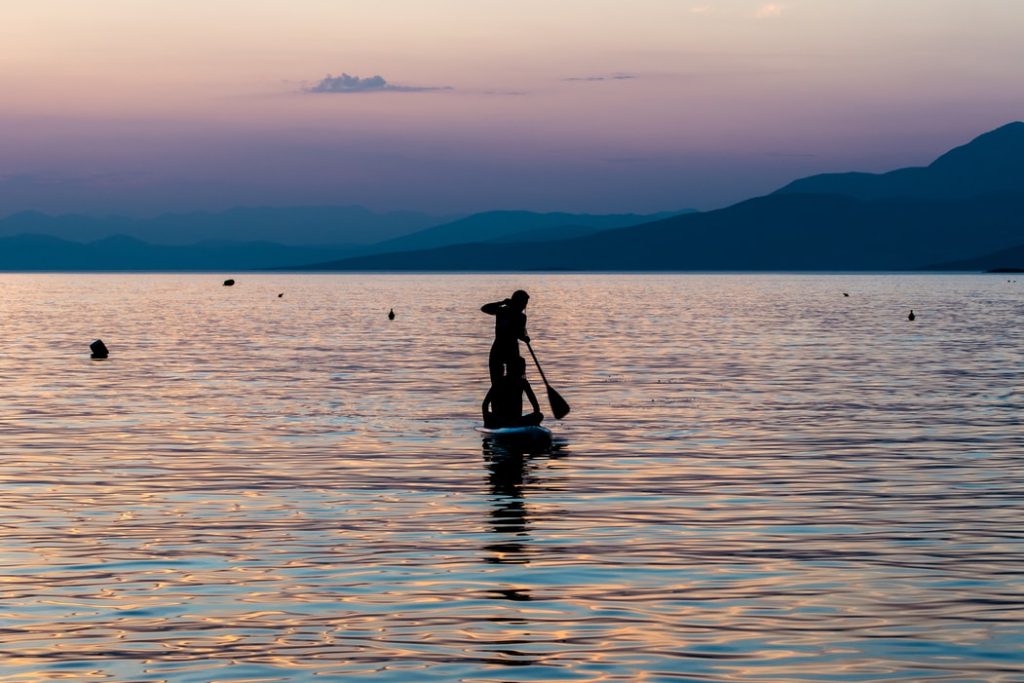
If you haven’t already tried stand up paddle boarding, why not? It’s the fastest growing water sport in the world, and it’s a great way to see a new place. Just imagine paddling along an alpine lake with a mountain background, catching waves on a sun-kissed surf beach, or sunrise yoga with no-one else around. All of these and more are possible when it comes to SUPing!
SUPing is challenging but rewarding, and it may seem a little intimidating when you first try it. However, the more you do it, the more you’ll get used to it. In this post, we’ll take a look at some things you should think about before your first paddle boarding adventure. Hopefully, it’ll put your mind at rest, and you’ll be able to make the most of your trip. Let’s take a closer look!
Where to go
The first and most important thing to take into consideration is where to go for a SUP trip. After all, there are lots of different ways to use your board. Do you want to do the simple stand up paddling? If so, it’s better to take a look at somewhere with flat water that you can just relax and enjoy the scenery as you’re working your body’s core. Perhaps you want something a little more adrenaline fueled? Surf SUP is what you’re looking for – for that you’ll need to head to a beach with the right conditions. Usually, a surfing beach is perfect for this, just make sure to know your place in the line–up. SUP yoga and SUP fishing are a little more specialised – but do your research and it won’t be hard to find places where you can practice either of these.
Get the right equipment
There is lots to think about when it comes to beginning stand up paddle boarding. Whether you’re thinking of buying or renting, the first things you’ll need is a board, paddle, PFD (personal floatation device) and leash.
At this point, you might be wondering what size paddle board is right for me? Generally, that comes down to your weight and skill level. Make sure to choose a board with a bit of room for man oeuvre in the weight capacity – you may need to factor extra weight for bags, or who knows, you may bring your dog along a SUP trip!
Once you’ve got the right board, it’s onto the paddle. That should be around 25cm longer than your height. If you’re buying your equipment, a paddle should cost around 20% of the board price.
A PFD and leash are both essential pieces of safety equipment. The former will keep you floating should you fall off the board. That’s particularly handy when it comes to surf SUP! The leash will help you in a different way if you fall – you won’t lose your board if you’re attached. A surf leash is different to a SUP leash, so don’t expect to use the same leash for both sports.
Learn to take a fall
While on the subject of staying safe, don’t assume that you’ll be fine if you fall with a PFD and a leash (though the chances are you will). You also need to fall in the right way. Obviously, you’d rather not fall at all, but it can be quite difficult for beginners to master their balance on the board. If you feel yourself losing balance, it’s important to fall away from the board. That way, you won’t get any unpleasant injuries. Even an inflatable board can do some serious damage if you faceplant it!
It’s more strenuous than it looks
When you see people stand up paddle boarding, it looks like they’re having the time of their lives (they probably are, by the way), while putting in very little effort. However, it takes a lot of core strength to stand up paddle board. You’ll use muscles that you’re not used to and at first it might hurt a bit when you get off your board. However, don’t let that put you off. The substantial improvement of your body’s core improves your posture and makes you more flexible.
SUPing is a full body workout that you don’t notice at the time, and what could be better than that?
Respect those around you
Once you start to master the basics of SUPing, you need to be aware of other people around you too. Obviously, the dream is having a whole mountain lake to yourself, but when you start off, you’re likely to be boarding with other newbie SUPers. Make sure that you do so on calm and flat water with plenty of room. That way, if you fall or get into any difficulties, you won’t put off other new SUPers.
Another time you’ll need to respect those around you is when you’re surf SUPing. Even after a bit of experience, you’ll need to learn the line–up. Surf SUPers sometimes get a bad rep with surfers, so if you are in any doubt, speak to a local or experienced surfer at the beach. Not only is this useful for learning the line–up, but it’ll also alert you to any hazards or dangers in the water.
Both of these are about more than just respecting other people. It’ll also prevent injuries to you and them!
Final Thoughts on your first paddle boarding adventure
If you follow the five steps written above, you will be sure to have a blast on your first paddle boarding adventure. And you’ll hopefully come back safe and sound too! Wherever you’re planning your adventure, we wish you a great time.
